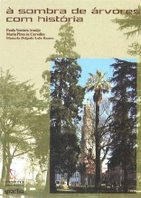Pollens forever
.
«As anyone who suffers hayfever knows, pollen travels through the air in massive clouds. Sometimes it is invisible and at other times it is so thick that yellow piles, billions of microscopic grains, can build up on street corners like mounds of sulphur powder. Unused pollen drops to the ground, sinks to the bottom of lakes and oceans or simply disappears. Unwanted pollen and spores have been landing on the ground for hundreds of millions of years and-with the right conditions-are indestructible. To survive, pollen cannot be exposed to oxygen. Nor can the grains be subjected to extremes of heat and pressure. When conditions are benign, pollen grains can be preserved in astronomical numbers -millions per cubic centimetre-and among palaeobotanists, palynologic field work is a comparative breeze. Pollen scientists need little more than a trowel and a matchbox-sized container to collect their fossils. The pollen is, however, visible only under a microscope and extracting the grains from the dirt requires the use of hydrofluoric acid-one of the most toxic reagents known and the best for isolating pollen.
If the conditions for preservation are maintained through millennia there is no limit on how long a pollen grain can survive buried underground. Such pollen is not petrified. The carapace is still the same organic polymer that was buried up to 400 million years ago. In fact the pollen wall is probably the most resistant natural polymer on earth. This means that palynologists can look at the exact pollen grains of the first primitive vegetation that began colonising millions of square kilometres of empty earth, though the delicate DNA inside is long gone and the preserved pollen is no longer capable of reproducing. Palynologists can thus make a good fist of recreating entire forests from the earliest days of the plant kingdom.
"These are extraordinarily stable compounds"-Macphail told me. "In the New York water supply there are 400-miIlion-year-old spores from the Devonian era that are pristine-they look like they have just dropped off a tree»
in The Wollemi Pine: The Incredible Discovery of a Living Fossil from the Age of the Dinosaurs by James Woodford (Text Publishing Melbourne Australia, 2002), pp.72/73
.
(By the way... Join the the Wollemi Pine Conservation Club ;-)
.





1 comentário :
For those who are interested... (ai que já ia embalado!) Para os interessados em saber a quantidade de polen que anda pelo ar, na sua zona, A TSF divulga as previsões semanais do estado dos pólens em Portugal numa parceria com a Sociedade Portuguesa de Alergologia e Imunologia Clínica (SPAIC).
O Boletim Polínico está ?no ar? todas as sextas, depois das notícias das 13h00 ? com reemissão a seguir às 16h00.
Podem também ver em http://www.rpa.uevora.pt/rede/porto/graficos/ultima_informacao_porto.htm
Enviar um comentário